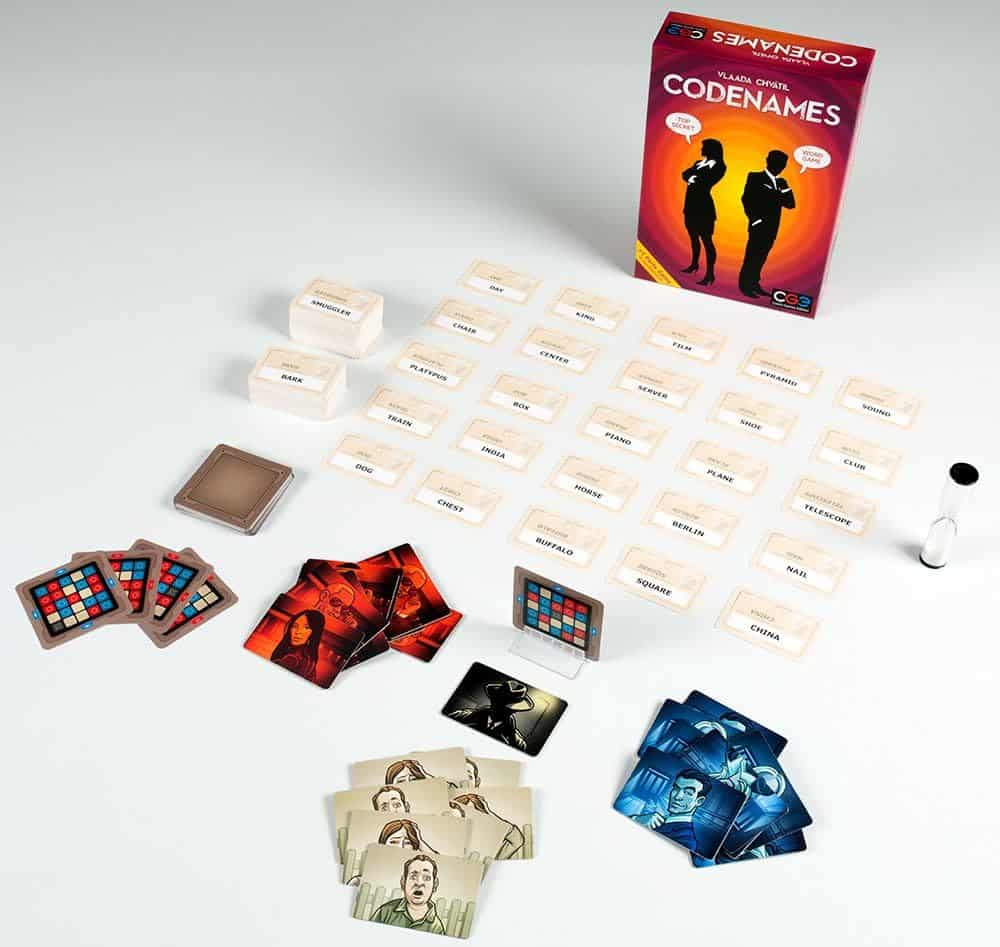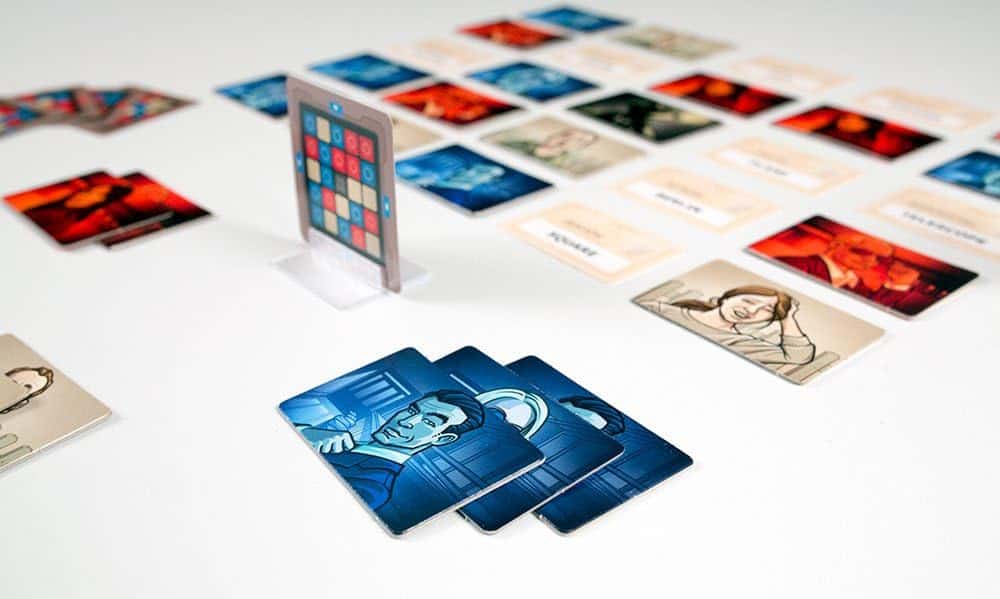Codenames is like the ultimate wordy showdown, where you and your fellow word warriors don your thinking caps and embark on a linguistic adventure that’s part spy thriller, part wordplay extravaganza.
It’s like a cross between Sherlock Holmes and James Bond, but with a dictionary as your trusty sidekick. Your mission? To connect seemingly unrelated words with a single clue while avoiding the dreaded assassin word, all under the ticking timer
Whether you’re the spymaster crafting clever clues or the daring field agent making leaps of linguistic faith, Codenames turns wordplay into a high-stakes game of wits and laughter.
What’s included in Codenames

- A 5×5 grid of words, with each word representing an agent, a bystander, or the assassin.
- Red and blue agent cards for each team.
- A double agent card for the starting team.
- An assassin card.
- Key cards (one for each game).
How to play Codenames?

The goal of “Codenames” is to correctly identify all of your team’s words from the grid of words on the table, based on a one-word clue given by your team’s spymaster. The first team to identify all their words or the team that identifies the assassin word loses the game.
Setup
- Divide players into two teams: the Red Team and the Blue Team. Each team designates a spymaster, and the rest become field operatives.
- Shuffle the agent cards and double agent card together and randomly place them face-down in a 5×5 grid. These cards represent the words on the table.
- Give the spymasters a key card that matches the color of their team. The key card provides clues about which words correspond to each team.
- Each spymaster secretly looks at the key card, which shows the words that correspond to their team (red or blue), as well as the location of the assassin and the double agent.
- The spymasters take turns providing one-word clues to their team that relate to one or more words on the table. They must also specify the number of words the clue relates to.
Rules for Codenames
- The game begins with the team whose color matches the color of the double agent card on the table. The spymaster from that team gives the first clue.
- The spymaster provides a one-word clue and a number (e.g., “Fruit – 3”). The word “Fruit” is the clue, and “3” is the number of words they believe the clue relates to.
- The field operatives discuss the clue and try to guess the words related to the clue. They can make one more guess than the number provided (e.g., in the example above, they can guess up to 4 words).
- The field operatives touch each word they want to guess. The spymaster covers guessed words with their team’s agent cards (red or blue) or the neutral bystander card, depending on which team the guessed words belong to or whether they are neutral.
- If a field operative touches the word corresponding to the other team, it ends their turn immediately. If they touch a word that corresponds to the assassin, their team loses the game instantly.
- If a field operative touches a word that belongs to their team, the spymaster covers it with their team’s agent card. They can continue guessing as long as they’re correct or until they reach the maximum number provided in the clue.
- Play passes to the other team, and their spymaster gives a clue. The game continues with each team taking turns until one team correctly identifies all their words or the assassin is chosen.
Winning: The game ends when one team correctly identifies all their words or when the assassin is chosen. The team that successfully identifies all their words wins the game.
For the official rules, see the link below:
Crucial tips on becoming the word spy ever!
· Study the Grid: At the beginning of the game, take a moment to study the grid of words on the table. Look for any obvious connections or words that might be easy to associate with clues.
· Use Clever Clues: As the spymaster, craft your clues carefully. Try to come up with a single word that can link multiple words on the table. Clever and concise clues are often the most effective.
· Be Mindful of Homophones: Words that sound similar but have different meanings can be tricky. Make sure your clue won’t lead your team to the wrong word.
· Consider Multiple Meanings: Some words have multiple meanings, so think about how your clue might be interpreted in different ways. This can lead to creative and effective clues.
· Avoid Clues That Are Too Specific: Clues that reference a very specific context or niche knowledge can be risky. It’s often better to choose clues that have broader associations.
· Use the Number Strategically: When giving a clue with a number, think about how many words on the table could reasonably fit that clue. Don’t be afraid to use smaller numbers when necessary.
· Pay Attention to Your Opponent’s Words: Keep an eye on which words your opponents are guessing correctly. This can help you deduce which words they associate with your clues and which ones are safe to guess.
· Think About the Assassin: Always be aware of the assassin word. Avoid giving clues that could accidentally lead your team to guess it. If your team has already guessed most of your words, it’s okay to give a clue that avoids the assassin word entirely.
· Don’t Rush: As field operatives, take your time to think about the clue and discuss it with your team. Rushing can lead to incorrect guesses.
· Coordinate with Your Team: Try to establish a shared understanding of the clues your spymaster gives. Discuss your interpretations before making guesses.
· Remember the Neutral Words: Neutral words are neither good nor bad, but they can help you figure out which words belong to your team or your opponents. Keep track of them.
· Adapt Your Strategy: Be flexible in your approach. If your team is struggling with a clue, don’t be afraid to move on and come back to it later.
· Use the Opponent’s Words: If your opponents inadvertently give you a clue that helps you guess one of your words, take advantage of it. You’re here to win, after all.
· Practice Makes Perfect: “Codenames” is a game of skill that improves with practice. The more you play, the better you’ll become at interpreting and giving clues.